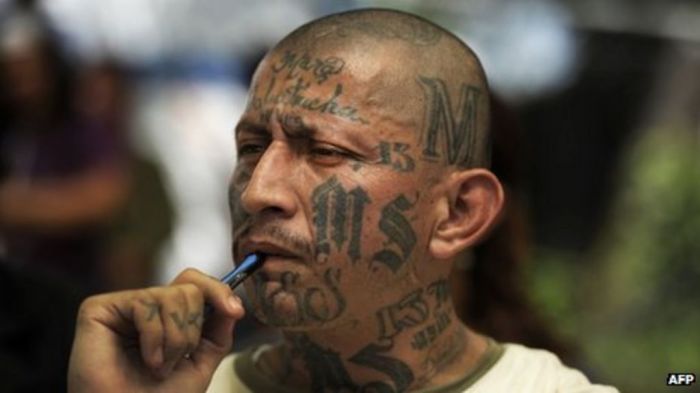Vida y Muerte en la Mara Salvatrucha summary delves into the complex and often deadly world of the Mara Salvatrucha gang, providing a comprehensive exploration of its history, internal dynamics, and the challenges of escaping its grip.
This captivating narrative unravels the gang’s origins, recruitment strategies, and involvement in illicit activities, while also examining the strict hierarchy, rituals, and daily lives of its members.
Mara Salvatrucha Gang History: Vida Y Muerte En La Mara Salvatrucha Summary

The Mara Salvatrucha (MS-13) gang originated in Los Angeles in the 1980s, founded by Salvadoran immigrants seeking protection from other gangs. The gang’s early structure was loose, with small cliques operating independently. Recruitment was primarily through family and friends, and territorial expansion was achieved through violence and intimidation.
Criminal Activities
- Drug trafficking: MS-13 is involved in the distribution of cocaine, marijuana, and other drugs.
- Extortion: The gang extorts money from businesses and individuals, often using violence or threats of violence.
- Violence: MS-13 is known for its extreme violence, including murder, assault, and kidnapping.
Life Inside the Mara Salvatrucha

Strict Hierarchy and Code of Conduct
MS-13 has a strict hierarchy, with leaders at the top and soldiers at the bottom. The gang has a code of conduct that includes loyalty, respect, and secrecy. Violation of the code can result in severe punishment, including death.
Initiation Rituals and Tattoos
Initiation into MS-13 involves a violent beating, known as a “jump-in.” Gang members also get distinctive tattoos, often depicting the gang’s name or symbols.
Daily Lives of Gang Members, Vida y muerte en la mara salvatrucha summary
Gang members live in overcrowded and dangerous conditions, often in gang-controlled neighborhoods. Their daily routines involve drug use, violence, and other risky behaviors.
Death in the Mara Salvatrucha

High Mortality Rate
The mortality rate among MS-13 members is extremely high. According to estimates, approximately 10% of members are killed each year.
Causes of Death
- Gang violence: The majority of deaths within MS-13 are due to gang-related violence.
- Police encounters: Gang members are often killed in confrontations with law enforcement.
- Substance abuse: Drug overdose and other substance-related deaths are common among gang members.
Rituals and Traditions
MS-13 has specific rituals and traditions surrounding death. Funerals are often held in secret, and gang members may tattoo the deceased member’s name or symbol on their bodies.
Psychological Impact
The death of a gang member has a profound psychological impact on the gang and the families of the deceased. It can lead to increased violence and retaliation, as well as feelings of grief and loss.
Escaping the Mara Salvatrucha
Challenges and Risks
Leaving MS-13 is extremely difficult and dangerous. Gang members face retaliation from the gang, as well as the risk of being targeted by rival gangs or law enforcement.
Support Systems and Programs
There are support systems and programs available to help gang members transition out of the gang. These programs provide counseling, education, and job training.
Success Stories
Despite the challenges, some former gang members have successfully left MS-13. These individuals have often sought help from support systems and programs, and have made significant changes in their lives.
FAQs
What is the Mara Salvatrucha gang?
The Mara Salvatrucha, also known as MS-13, is a transnational criminal gang that originated in Los Angeles in the 1980s and has since spread throughout the Americas.
What are the main activities of the Mara Salvatrucha gang?
The gang is involved in a wide range of criminal activities, including drug trafficking, extortion, human smuggling, and violence.
What are the challenges of leaving the Mara Salvatrucha gang?
Leaving the gang is extremely difficult and dangerous, as members face threats of violence and retaliation from other gang members.